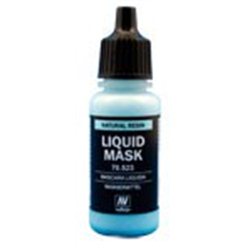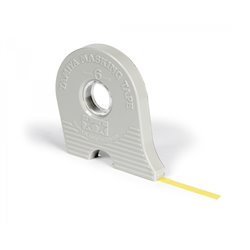Static grass puffer bottles work by manually charging model grass fibres with static electricity. When the charged...
No products
Product successfully added to your shopping cart
There are 0 items in your cart. There is 1 item in your cart.
Search Tips
How do I use Vallejo Liquid Mask?
Liquid Mask by Vallejo is a liquid medium designed to be used by modellers to mask off areas during painting. It can be applied either by brush or airbrush and dries in about two hours leaving a transparent rubberised surface that will protect surfaces from additional coats of paint. This is particularly useful when painting clear transparent parts such as aircraft cockpit canopies. It can also be used to mark the demarcation lines in specific colour patterns such as camouflage schemes on ships, aircraft or armoured vehicle models.
Liquid Mask can also be cleverly used when a modeller is looking to achieve certain weathering effects such as underlying rust. Liquid Mask can be applied to a model after the initial rust undertone has been painted. This is best achieved in a random manner such as from a segment of foam scouring pad or by flicking a paintbrush with a toothpick. Final layers of paint can then be applied and when these have dried the liquid mask can be carefully removed by a scalpel, toothpick or gentle rubbing of a cloth. This will then reveal the underlying layer of rust and if done carefully it may be possible to leave small amounts of Liquid Mask behind. This can work well with the rust undertone by hinting at bubbling in the paintwork, thus giving a discernible 3D effect and allowing the subsequent paint job to really pop giving a very lifelike finish.
Liquid Mask can also be used in combination with other masking mediums such as masking tape when masking off larger areas. For example in the case of masking off an access panel then the inner edges could be masked off with tape with the rest of the area covered with Liquid Mask. When it is time to remove the protective mask simply peel back the edge of the masking tape with a scalpel and the Liquid Mask will be removed at the same time. This technique has obvious advantages when used on awkward shapes or uneven surfaces which may otherwise require masking tape to be cut to specific shapes which can be time-consuming and difficult to apply.
Click here to receive the tips weekly in your mailbox. You can unsubscribe at any time.










